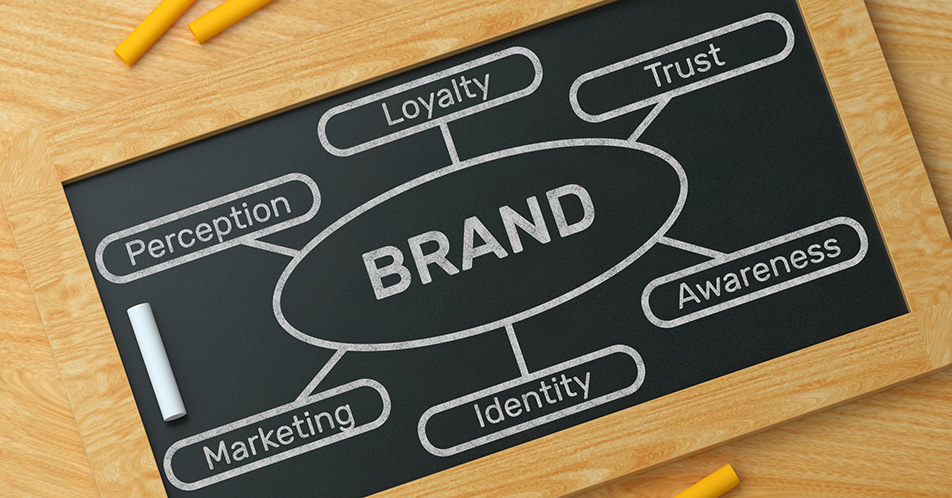4 Parts of a Brand Awareness Campaign

Brand equity is the goal of every marketer for their clients. Brand equity refers to the premium value that consumers assign to a product or a service simply because the product/service carries a recognizable name. Consumers do not assign such premium value to a similar generic product or an unknown entity. Name recognition implies consumer value even without knowing the specifics of a product/service’s worth.
Brand equity typically translates into increased sales, too, but the process does not occur naturally. A successful marketing staff works hard at achieving brand equity, boosting brand awareness, and then nurturing the total undertaking through a carefully planned and executed campaign.
Brand awareness campaigns are the mechanism that promotes your brand and enlarges the proportion of mental real estate that the brand occupies in consumers’ minds. You can divide your brand awareness campaign into four distinct segments:
- Brand identity
- Target audience
- Marketing strategy
- Content creation
Let’s look at each of them.
Brand Identity
The term brand identity refers to the characteristics of a product or service that allows consumers to discern those products/services from another’s products/services or generic equivalents. The term embraces the company’s selection of a brand name, logo, identifiable colors, and shapes in ads.
If your brand is new, then the first step is to form that brand identity and keep it in mind when designing the brand awareness campaign. The most important idea is to remain consistent with the identity you create.
It is also important to realize that your brand will have a pre-existing identity unless you never before presented your brand to the world at large. If the brand awareness campaign is not consistent with the brand’s pre-existing identity, then the campaign, in reality, is a rebranding campaign and not a brand awareness campaign.
Bear in mind throughout the brand awareness process that a successful brand becomes a valuable firm asset. For example, in 2020, Forbes cited Apple as the #1 brand, with an estimated value of $205.5 billion.
Target Audience
A brand awareness campaign focuses on raising the consciousness of the brand among targeted community segments. In practical terms, that means brand awareness campaigns focus on those community members that are most likely to become customers or clients. It’s not financially advantageous to focus efforts on those consumers who will never become customers or clients.
The brand awareness campaign identifies and targets the audience whose specific demographics (age, male/female, educational level, etc.) and psychographics are most favorable to the brand. There are several methods marketers use to identify the target audience:
- Surveys
- Focus groups
- One-on-one interviews
The target audience also may indicate a need to raise the brand’s awareness among a new viewing audience or to concentrate on a particular audience segment not targeted before. In any case, identifying the target audience will shape your marketing strategy.
Marketing Strategy
It is crucial that you introduce your brand to a target audience if you are going to succeed in raising awareness. To do that, you must meet your target audience where they work, live, or play. The marketing strategy may include various forms of advertisement, such as:
- Radio advertisements – A radio ad is cost-efficient, audio-based, targeted to a loyal audience, and is repetitive so it stays in the top of mind.
- Social media channels – Social media marketing is friendly, relaxed, and provides a platform to reach younger audiences and potential customers who may not follow traditional advertising methods but will distribute the ad widely to friends and followers.
- Display advertising – Digital display adverts appear prominently on websites, apps, or social media. The ads often consist of banners, videos, or flash.
- Billboards – Appearing in high traffic areas, billboards were originally designed and sized as large outdoor displays to attract viewer attention along highways. Today billboards can be signs carried by humans or digital billboards programmed by computers to change the message every few seconds.
- Live events – Publicity may take the form of an event where the public attends and learns about a particular product or service (think sponsors at conferences).
At this juncture, you are armed with information about the importance of your brand’s identity, ways to pinpoint your target audience, and the options where you might focus your marketing strategy. At this point, too, the promotions department has enough salient information to decide what kind of marketing creative best fits your campaign.
For a brand awareness campaign, good creative enjoys more latitude than other types of marketing campaigns. The focus of a brand awareness campaign is not meant to sell items like lead generation or product promotion campaigns. Therefore, good marketing creative incorporated into a brand awareness campaign may play on a more imaginative playing field.
Consider This
The best practices for marketing creative are beyond the scope of this article. If you are interested in learning more about this topic, we invite you to download our e-book entitled “Business Guide to Marketing Creative for Optimal Results.”
Share This
Subscribe
Stay on top of industry news and trends.
